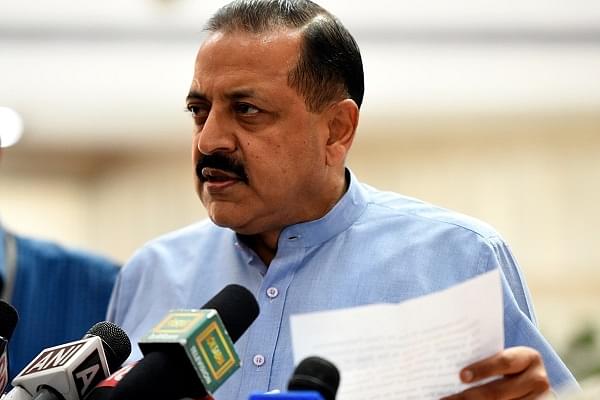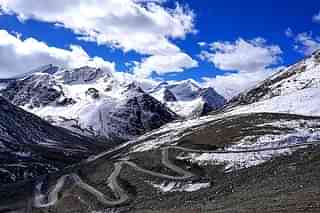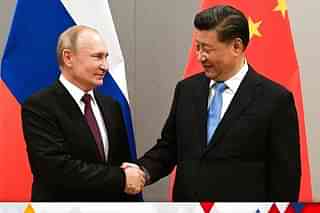News Brief
Union Minister Says Four Indian Covid-19 Vaccines Are In Human Trials, One In Advanced Preclinical Stage
Bhaswati Guha Majumder
Jul 21, 2021, 06:08 PM | Updated 06:10 PM IST
Save & read from anywhere!
Bookmark stories for easy access on any device or the Swarajya app.

The Science and Technology Minister Jitendra Singh said on 20 July that four Covid-19 vaccine candidates are at various phases of human trials, with one candidate—developed by the Gurugram-based Genique Life Sciences—in the advanced preclinical stage. In India, currently, there are three vaccines—Covaxin, Covishield and Sputnik V—which are being given to the population, and an addition to this vaccine list will undoubtedly help the country with almost 140 crore population to boost its efforts to fight against the coronavirus pandemic.
In a written response to a question in Rajya Sabha, the minister said that one of the leading pharmaceutical companies in India, Zydus Cadila's DNA-based vaccine candidate is in phase three clinical trial and has submitted interim results for emergency use authorization. Additionally, he said that two vaccine candidates from Biological E and Bharat Biotech's intranasal vaccine are currently in phase three trials. As per the minister, the mRNA vaccine candidate from Gennova Biopharmaceuticals Ltd is now in phase one clinical trial.
According to Singh, Mission COVID Suraksha—which is India's Covid-19 vaccine development mission—was unveiled as part of the "Atmanirbhar Bharat 3.0" stimulus package for promoting research and development of Indian coronavirus vaccines. He said: "The mission is supporting the development of four vaccine candidates in the clinical stage of development and one vaccine candidate in advance preclinical stage of development. The clinical development of vaccine candidates is being undertaken across the clinical trial sites situated pan-India".
He said that India has launched significant national and international research initiatives to address the coronavirus disease-related difficulties, with a focus on basic research, diagnostics, treatments and vaccine development in close partnership with industry and start-ups.
Additionally, the minister stated that to find solutions against the SARS-CoV-2, necessary science and technology frameworks have been put in place to connect its scientific community with experts from other countries such as Australia, Japan, Brazil, Denmark, Egypt, Israel, Portugal, Korea, Norway, Russia, Serbia, Singapore, Slovenia, South Africa, Vietnam, the United Kingdom and the United States. However, apart from bilateral collaboration, India participates in the BRICS programme, which brings together Brazil, Russia, China and South Africa.
Singh stated that a joint request was launched for Covid-19, spanning many platforms ranging from illness surveillance to diagnosis, covering vaccines and treatments, as well as repurposing of pharmaceuticals, artificial intelligence intervention and high-performance computing. The minister also said that India is one of the few countries in the world with a promising pipeline of vaccine candidates in various stages of clinical development across several platforms.
In terms of the vaccines in India, Bengaluru's Indian Institute of Science (IISc) has developed a new jab that is effective against all current SARS-CoV-2 variants of concern, according to the latest animal testing. While most of the currently available and popular Covid-19 vaccines need refrigeration to remain effective, researchers found that the IISc's vaccine can remain effective at 37 C (Celsius) for up to a month, as well as at 100 C for about 90 minutes.
Save & read from anywhere!
Bookmark stories for easy access on any device or the Swarajya app.
Support Swarajya's 50 Ground Reports Project & Sponsor A Story
Every general election Swarajya does a 50 ground reports project.
Aimed only at serious readers and those who appreciate the nuances of political undercurrents, the project provides a sense of India's electoral landscape. As you know, these reports are produced after considerable investment of travel, time and effort on the ground.
This time too we've kicked off the project in style and have covered over 30 constituencies already. If you're someone who appreciates such work and have enjoyed our coverage please consider sponsoring a ground report for just Rs 2999 to Rs 19,999 - it goes a long way in helping us produce more quality reportage.
You can also back this project by becoming a subscriber for as little as Rs 999 - so do click on this links and choose a plan that suits you and back us.
Click below to contribute.





